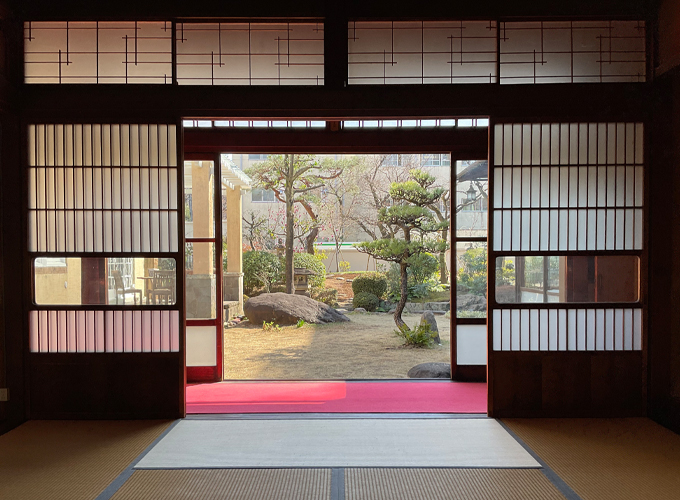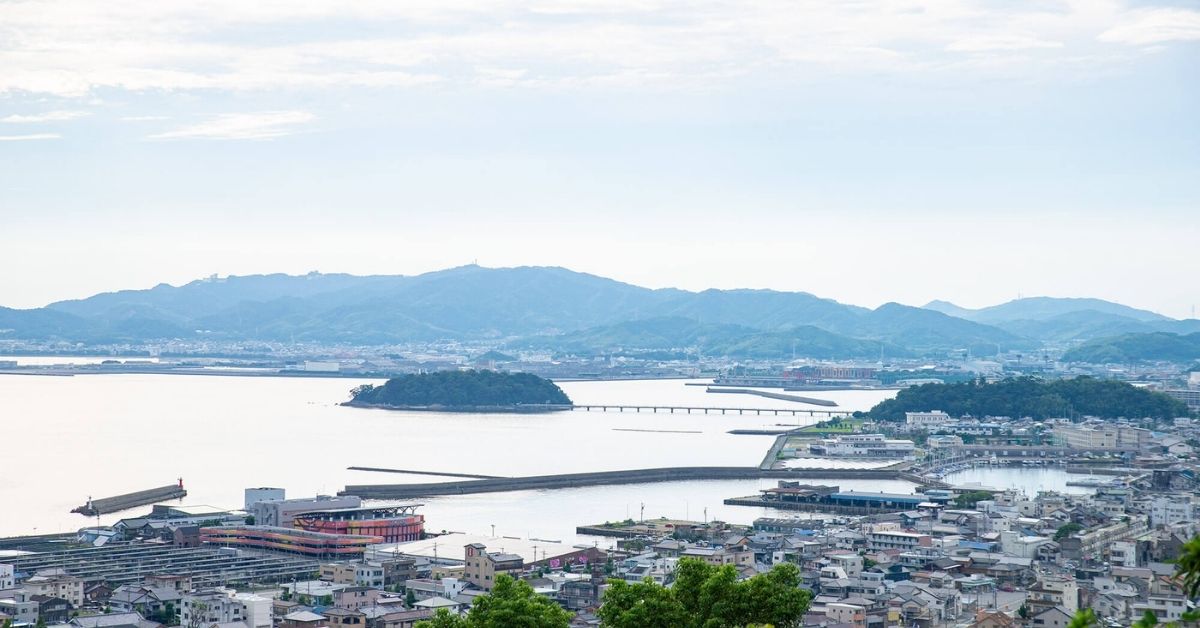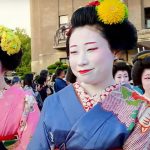If Nagoya had a soul, it’d probably be located in the Cultural Path.
The area known locally as Bunka no Michi (the Cultural Path, in Japanese) is the zone between Nagoya Castle and Tokugawa Garden. During the Edo Period (1603-1867), this district served as the residential area for middle and lower-class Samurai. But throughout the Meiji to the early Showa Periods (1868-1930), it transformed into a hub for entrepreneurs, missionaries, journalists, and artists.
Such a unique combination of people and historic circumstances made this area what it is today: a pocket of the city full of architectural marvels, time-honored traditions, and a palpable sense of history.
Prepare to be captivated as we unveil the hidden gems along Nagoya’s Cultural Path, because when we say that Nagoya has something for everyone, we mean it.
Article Contents
Take a Peek Into Nagoya’s Past and the Life Of Its Notable Figures
With more than 15 facilities open to the public for visits, there’s a lot to see and do during your visit to the Nagoya Cultural Path. We’ve selected a few of the most popular ones here, which you can combine during your visit to Nagoya Castle or Tokugawa Garden.

The Nagoya City Archives

The Nagoya City Archives building, constructed in 1922, underwent a notable transformation over the years.
Originally a neo-baroque brick law court with clear Western influences, the Nagoya City Archives has transformed into a cultural hub of sorts. It used to house the Nagoya Court of Appeals, District Court, and Ward Court buildings. But later in 1984, it became a national cultural asset and since then it has been used as an archive of Nagoya’s history as well as a cultural facility for the citizens.
Here, guests have the opportunity to wander through various exhibition spaces showcasing an array of wonders, including Japan’s exquisite stained-glass windows. They can also tour a recreated courtroom often used for filming local dramas, as well as a meticulously restored conference hall and a historical prisoner lock-up.
Nagoya City Archives and Museum (名古屋市市政資料館)
Entry Fee: free
Opening Hours: 09:00 to 17:00, closed on Mondays
Address: 1-3 Shirakabe, Higashi Ward, Nagoya, Aichi 461-0011
Website (Japanese Only)| Google Maps

Futaba Museum

This mansion-turned-museum, affectionately called by the locals the “Futaba Palace,” holds a rich history intertwined with the lives of two of Nagoya’s illustrious figures. Once the residence of Sadayakko Kawakami, considered Japan’s first actress, and Momosuke Fukuzawa, renowned as the “King of Electric Power,” it stands as a testament to their legacy.
The house was originally constructed in 1920 and relocated in 2000. It has been meticulously restored and is now designated as a cultural treasure. Its innovative design, adorned with revolutionary electrical fixtures, welcomed a stream of influential visitors, symbolizing the spirit of the Taisho era (1912-1926).
With its iconic orange roof and a blend of Western elegance and traditional Japanese charm, this architectural gem is a must-visit along Nagoya’s Cultural Path.
Cultural Path Futaba Museum (文化のみち二葉館)
Entry Fee: 200 yen, free for junior high school students and younger
Opening hours: 09:00 to 17:00, closed on Mondays
Address: 3-23 Shumokucho, Higashi Ward, Nagoya, Aichi 461-0014
Website | Google Map
Shumoku Museum

In the Nagoya Cultural Path, you will have the opportunity to step into the world of a prominent porcelain exporter. The Cultural Path Shumoku Museum was once the cherished residence of ceramics trader Tamesaburo Imoto.
Built from the late Taisho Era (1912-1926) to the early Showa Era (1926-1989), this semi-European style house, completed in 1926, exemplifies the luxury of its time. As you wander through its halls, you will go from a colorful, light Western-style building to the Japanese-style quarters that transmit a nostalgic essence of bygone eras.
The enchanting garden, adorned with a traditional tea house, is not to be missed. It magically unfolds the beauty of the changing seasons, offering a serene retreat from the city.
Cultural Path Shumoku Museum (文化のみち橦木館)
Entry Fee: 200 yen, free for junior high school students and younger
Opening hours: 10:00 to 17:00, closed on Mondays
Address: 2-18 Shumokucho, Higashi Ward, Nagoya, Aichi 461-0014
Website | Google Map
Former Residence of Sasuke Toyoda

Have you ever thought you could be inside the house of one of the members of the Toyota family? Well, this will become true next time you visit Nagoya’s Cultural Path.
Sasuke Toyoda was the younger brother of Toyota Corporation’s visionary founder Sakichi Toyoda and the managerial mastermind behind the company’s success. The former residence of Sasuke Toyoda, built in 1923, is an example of the architectural innovation in Nagoya during that era, connecting the Taisho period (1912-1926) with the present day.
The home boasts a unique blend of Western-style wooden design and traditional Japanese elements. Moreover, it’s adorned with intricate details such as lotus-shaped lights and ventilation ducts featuring the iconic “Toyota” characters within a crane motif, it offers a glimpse into the creativity of its time.
Former Residence of Sasuke Toyoda (旧豊田佐助邸)
Entry Fee: free
Opening hours: 10:00 to 15:30, closed on Mondays
Address: 3-8 Chikaramachi, Higashi Ward, Nagoya, Aichi 461-0018
Website (Japanese Only) | Google Map

Our Top Dining Recommendations
The Nagoya Cultural Path is not necessarily a foodie destination, but it does have a couple of cozy local eateries and cafes. Here are some of our recommendations:
Shumoku Cafe

Inside the Nagoya Cultural Path Shumoku Museum, you’ll find the charming Shumoku Cafe. This makes it a great place to take a break between museums and allow yourself a relaxing moment surrounded by artwork and beautiful Taisho-era (1912-1926) stained glasses.
The cafe offers traditional options such as a variety of tea and coffee, along with several modern and fun alternatives like cream tea soda, affogato, and pancake sets.
Shumoku Cafe (白壁カフェ 花ごよみ)
Opening Hours: 10:30 – 17:00; closed on Mondays
Price: no museum admission fee is required if you only visit the cafe
Address: 2-18 Tsutsugicho, Higashi Ward, Nagoya, Aichi 461-0014
Website (Japanese only) | Google Maps
Hanagoyomi

The fact that we have already mentioned Hanagoyomi in our Complete Guide to Ogura Toast in Nagoya as well as in our in-depth article about Nagoya Breakfast might give you an idea of how much we appreciate this place.
This Japanese sweets cafe is located right in the heart of Nagoya’s Cultural Path. Its stylish architecture with its modern wooden interior blends in seamlessly with the rest of the cultural treasures in the area.
In addition to their delicious sweets, their menu consists of a variety of Japanese dishes such as Sushi, Udon, Soba, and Donburi. Furthermore, they offer traditional Japanese breakfast items, such as Chawanmushi (steamed egg custard), Onigiri (rice ball), and Ochazuke (rice with tea poured over) or Okayu (rice porridge) depending on the season.
In this restaurant, you will have the possibility to enjoy your meal al fresco on their roofed terrace. And what’s best: pets are also welcome!
Hanagoyomi (白壁カフェ 花ごよみ)
Opening Hours: 7:30 – 22:00
Morning Service: 7:30 – 10:00
Price: Morning Service: free; Drinks: from 450
Address: 4-72 Chikaramachi, Higashi Ward, Nagoya, Aichi 461-0018
Website (Japanese only) | Google Maps
Retro Vibes of Nagoya’s Cultural Path Tour
When you decide to visit the Nagoya Cultural Path, It can be a bit overwhelming to choose where to start and which sites to include. We have curated a selection of our favorite historic buildings connected to Nagoya’s cultural and business figures, so you can just join and enjoy yourself.
Experience the rich history of this extraordinary part of the city as we guide you through three historic houses that once belonged to visionary industrialists in this 2-hour tour. Book now here!

Getting There and Moving Around
The Nagoya Cultural Path is tucked in between two subway lines: the Meijo Line and the Sakuradori Line. From Nagoyajo Station (Meijo Line) it’s a 5-minute walk to the Nagoya City Archives and a 15-minute walk to most of the museums in the area. On the other hand, from Takaoka Station exit 2 (Sakuradori Line), you’ll have to walk for about 10 minutes to get to most of them.
However, the Me~guru Sightseeing Route Bus is another really good alternative to get there and around if you prefer not to walk so much to and from the subway stations. For more information, here’s our complete guide on how to get around Nagoya.
This post was last updated in March 2024.
Although we strive to provide you with the most accurate and up-to-date information possible, please note that changes may occur nonetheless. We recommend you confirm any relevant information such as event cancelations or changes, opening hours, or possible restrictions using a direct source. Please keep in mind that these sources might be in Japanese only.









